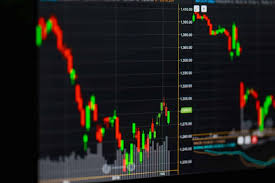
Forex trading, also known as foreign exchange trading or currency trading, is the process of buying and selling currencies in the foreign exchange market. It is one of the largest and most liquid markets in the world, with a daily trading volume exceeding $6 trillion. In this guide, we will explore the fundamentals of forex trading, including how it works, the different players involved, essential terms to know, and various trading strategies. For more resources and insights on forex trading, visit what is forex trading https://acev.io/.
Forex trading involves the exchange of one currency for another at an agreed price. This can be done through various platforms, including online brokers and financial institutions. Unlike stock markets, which operate within specific hours, the forex market is open 24 hours a day, five days a week, allowing traders from all around the globe to participate at their convenience.
Forex trading operates on a system of currency pairs, where one currency is exchanged for another. Each currency pair is represented by a three-letter code, with the first code denoting the base currency and the second code denoting the quote currency. For example, in the pair USD/EUR, USD is the base currency, and EUR is the quote currency. Traders speculate on the price movements of these currency pairs, aiming to profit from fluctuations in exchange rates.
Several participants play critical roles in the forex market, including:
To navigate the world of forex trading effectively, it’s important to understand some key concepts:

Successful forex trading relies on effective market analysis, which can be broadly categorized into three types:
Fundamental analysis involves examining economic indicators, geopolitical events, and other factors that can impact currency prices. Key indicators include interest rates, employment figures, and inflation data. Understanding these elements helps traders predict currency movements based on economic conditions.
Technical analysis focuses on historical price data and chart patterns to identify trends and potential entry and exit points. Traders use various tools, such as moving averages, trend lines, and candlestick patterns, to analyze price movements.
Sentiment analysis gauges market sentiment regarding specific currency pairs. It involves assessing the mood of the market, often through trader surveys or by analyzing commitment of traders (COT) reports. Understanding market sentiment can provide insights into potential price movements.
There are various trading strategies that traders can employ to navigate the forex market effectively:
Day trading involves making multiple trades within a single day, with positions closed before the market closes. Traders seek to capitalize on short-term price movements, often using technical analysis for decision-making.

Swing trading focuses on capturing price swings over several days to weeks. Traders hold positions longer than day traders and may use a combination of technical and fundamental analysis to identify potential trade setups.
Scalping is a high-frequency trading strategy that involves making quick trades to profit from small price changes. Scalpers aim to execute numerous trades throughout the day, capitalizing on minimal price fluctuations.
While forex trading presents many opportunities, it also involves significant risks. These include:
If you’re interested in entering the forex market, follow these steps:
Forex trading offers exciting opportunities for traders looking to engage in a dynamic and fast-paced market. However, success requires a solid understanding of currency pairs, market analysis, and risk management strategies. By educating yourself and practicing regularly, you can become a proficient forex trader and potentially achieve your financial goals.

Forex trading, or foreign exchange trading, is one of the most dynamic financial markets in the world. It involves buying and selling currencies and can be both profitable and risky. To navigate this complex market successfully, traders must equip themselves with knowledge, strategies, and the right tools. One such tool is forex trading acev.io, which can enhance trading efficiency and effectiveness. In this guide, we will explore essential aspects of Forex trading, including strategies, risk management, and the importance of tools and technology.
The Forex market operates 24 hours a day, five days a week, making it unique compared to other financial markets. It is decentralized, meaning that trading occurs over-the-counter (OTC) rather than on centralized exchanges. The Forex market is the largest financial market globally, with a daily trading volume exceeding $6 trillion. Currencies are traded in pairs, with the price of one currency quoted against another. Understanding how these pairs work is fundamental for any trader.
Currency pairs are categorized into three main types: major, minor, and exotic pairs. Major pairs include the most traded currencies globally, such as EUR/USD, USD/JPY, and GBP/USD. Minor pairs involve currencies that are less frequently traded, like AUD/CAD and EUR/GBP. Exotic pairs consist of a major currency paired with a currency from a developing economy, such as USD/TRY or EUR/ZAR. Each type of pair has its characteristics and volatility, impacting trading strategies.

There are several trading strategies that Forex traders can employ. Here are some of the most common:
Effective risk management is crucial in Forex trading. Without it, traders can face significant losses, even with a solid trading strategy. Here are some key principles to follow:
In today’s digital age, technology plays a significant role in Forex trading. Many traders rely on various tools and platforms to enhance their trading experience. Some essential tools include:

Continuous learning is vital in Forex trading. The market is constantly evolving, and traders must adapt to changing conditions. Many resources are available, including online courses, webinars, and trading forums. Engaging with a community of traders can provide valuable insights and support. Additionally, reading books and articles on Forex trading can enhance your knowledge base.
Even seasoned traders can fall victim to common mistakes. Here are some pitfalls to avoid:
Forex trading offers exciting opportunities for profit, but it also comes with inherent risks. By understanding the market, employing effective strategies, managing risks, and utilizing the right tools, traders can navigate this complex landscape effectively. Continuous learning and sound decision-making are essential for long-term success in Forex trading. Whether you are a beginner or an experienced trader, investing time in education and practice can significantly enhance your trading journey.